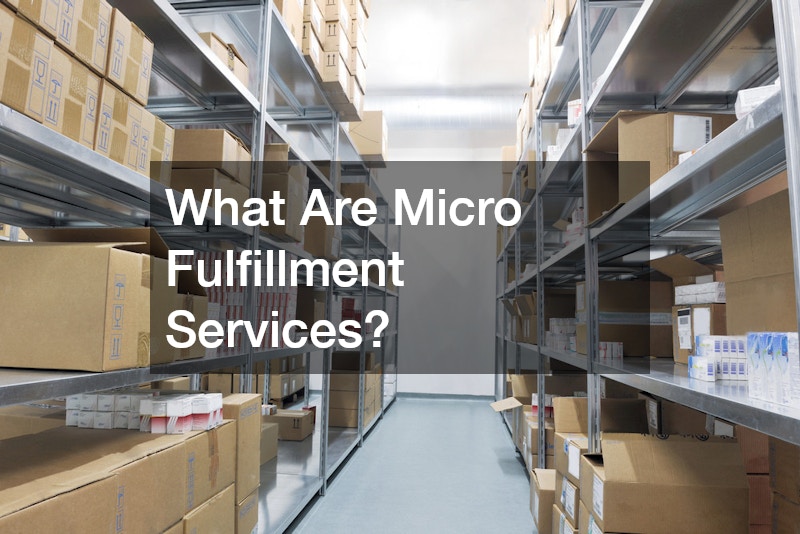Micro fulfillment services have rapidly become a crucial part of modern supply chain and e-commerce operations. With the rise of consumer demand for faster delivery times and personalized shopping experiences, businesses are looking for innovative solutions to keep up. Micro fulfillment services address this need by offering a hyper-localized and efficient model that brings goods closer to customers, improving delivery speed, reducing costs, and optimizing the entire supply chain.
In this article, we’ll explore what micro fulfillment services are, how they work, and the benefits they provide to both businesses and consumers.
What is Micro Fulfillment?
At its core, micro fulfillment refers to the process of fulfilling e-commerce orders from smaller, localized warehouses that are strategically placed near high-density population areas. Unlike traditional fulfillment centers that are often located in remote areas or on the outskirts of cities, micro fulfillment centers (MFCs) are much smaller and designed to serve as hyper-local distribution points. These centers can be located in urban areas, often in underutilized spaces such as vacant retail stores, repurposed buildings, or in the basements of larger commercial properties.
Micro fulfillment services focus on optimizing the last mile of delivery, ensuring that products can be shipped to consumers quickly—sometimes within the same day. This is achieved by reducing the distance between the customer and the fulfillment center, allowing businesses to meet the growing demand for faster, more reliable delivery options.
How Do Micro Fulfillment Services Work?
Micro fulfillment services leverage advanced technologies and automation to streamline the fulfillment process. Here’s a breakdown of how the system typically works:
Product Sourcing and Storage: Products from a retailer or brand’s supply chain are distributed across a network of micro fulfillment centers. Each center stores a selection of the company’s inventory based on demand in the surrounding area. The idea is to store the most popular items at these localized centers to avoid delays and reduce shipping costs.
Order Placement: When a customer places an order online, the micro fulfillment center closest to them is selected to fulfill the request. This is typically determined by the proximity to the customer’s address and the availability of the item in stock.
Picking and Packing: Micro fulfillment services often use automation, such as robots and conveyor belts, to pick and pack orders with speed and accuracy. This reduces human error and minimizes the time it takes to prepare an order for shipping.
Shipping and Delivery: Once the order is packed, it is shipped using local courier services or delivery drivers. Since the fulfillment center is close to the customer, the delivery time is significantly reduced, sometimes to a matter of hours. In some cases, micro fulfillment centers are designed to facilitate same-day or even one-hour delivery, depending on the business model.
Return and Exchange Management: MFCs also play a role in managing returns and exchanges. Due to their proximity to customers, returns can be processed much more efficiently. Customers can return items locally rather than sending them back to distant warehouses, speeding up the reverse logistics process.
Benefits of Micro Fulfillment Services
The adoption of micro fulfillment services offers several key advantages to businesses, consumers, and the overall logistics industry. Let’s take a closer look at these benefits:
Faster Delivery Times: The most significant advantage of micro fulfillment services is their ability to offer fast, efficient delivery. By having inventory located closer to the consumer, companies can offer same-day or next-day delivery options, meeting the rising demand for faster shipping. This is especially crucial in industries like groceries, fashion, and electronics, where speed can be a deciding factor in customer satisfaction.
Cost Reduction: Micro fulfillment can lower transportation costs, as products don’t need to be shipped from distant fulfillment centers. With reduced transportation distances, companies can cut down on shipping fees, improve fuel efficiency, and reduce their carbon footprint. Additionally, the use of automation in micro fulfillment centers can lower labor costs and increase operational efficiency.
Better Inventory Management: Because micro fulfillment centers are strategically placed in local markets, businesses can better manage inventory levels and stock products based on the demand in specific areas. This leads to more accurate forecasting and ensures that customers get what they want when they want it. The localized nature of micro fulfillment also helps businesses maintain lower stock levels in each center, reducing the risk of overstocking or stockouts.
Improved Customer Experience: With quicker deliveries, businesses can provide a better customer experience. The ability to track orders in real time, along with fast and accurate delivery, boosts customer satisfaction and loyalty. Moreover, the convenience of having local returns and exchanges makes shopping more convenient for customers.
Space Optimization: Micro fulfillment services allow businesses to utilize smaller spaces more effectively. Retailers can repurpose existing spaces, such as unused storefronts or warehouse corners, to serve as fulfillment hubs, reducing the cost of maintaining large fulfillment centers or warehouses. This also minimizes the risk of underutilized warehouse space.
Scalability: Micro fulfillment services are scalable, making them an attractive option for businesses of all sizes. Companies can start by setting up one or two micro fulfillment centers in key locations and gradually expand to meet growing demand. As the e-commerce industry continues to evolve, businesses can adjust their fulfillment network in real-time based on customer behavior and market trends.
Watch the video above to learn more about micro fulfillment services!
.

